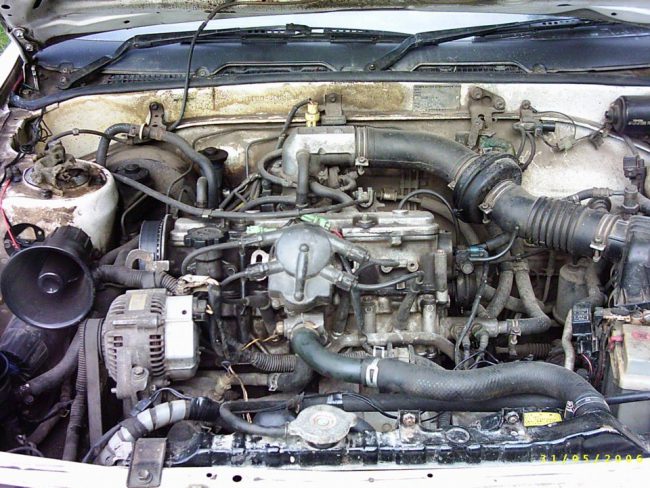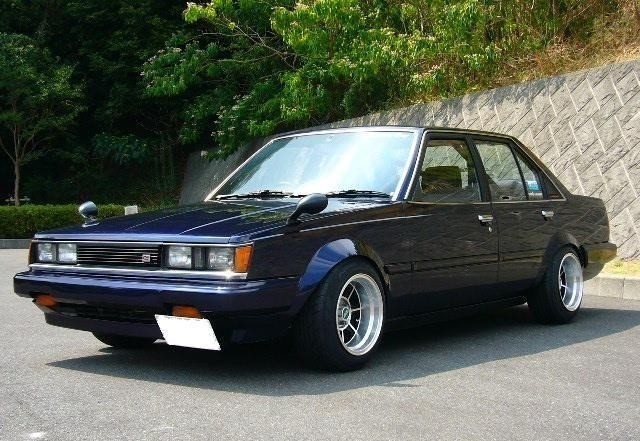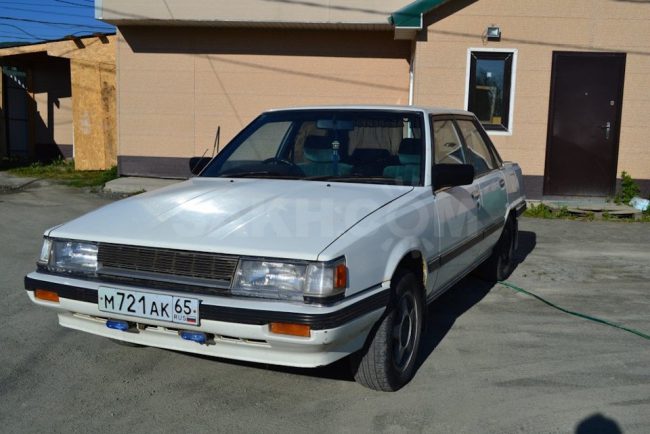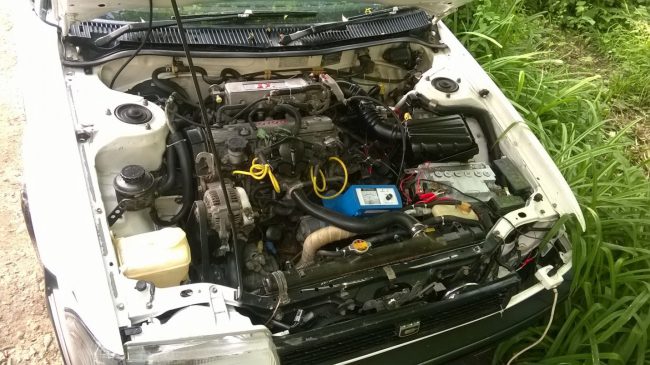
Toyota 1S, 1S-L, 1S-U, 1S-LU, 1S-iLU, 1S-iL, 1S-E, 1S-ELU, 1S-EL engines
Content
Toyota S series engines are considered one of the most reliable in the production range of the Toyota concern, which is only partly true. For a long time they were the main ones in the group's engine line. However, this applies to the founders of this series - 1S motors, which appeared in 1980, to a lesser extent.
S-series engine design
The first 1S unit was a 4-cylinder in-line overhead engine with a working volume of 1832 cm3. The cylinder block is made of cast iron, the block head is made of light aluminum alloy. 8 valves were installed in the block head, 2 for each cylinder. The timing drive was carried out by a belt drive. The valve mechanism is equipped with hydraulic compensators, clearance adjustment is not required. There are recesses in the bottoms of the pistons that prevent the valves from meeting with the pistons when the timing belt breaks.

A complex carburetor was used in the power system. Ignition - distributor, which had a significant design miscalculation. The cover and high-voltage wires are made in one piece, only the assembly can be replaced.
The engine was made long-stroke. The cylinder diameter was 80,5 mm, while the piston stroke was 89,9 mm. This configuration provides good traction at low and medium speeds, but the piston group experiences excessive loads at high engine speeds. The first S-series engines had 90 hp. at 5200 rpm, and the torque reached 141 N.m at 3400 rpm. The motor was installed on Toyota Carina cars with a SA60 body, as well as on Cressida / Mark II / Chaser in SX, 6X versions.

In mid-1981, the engine was upgraded, the 1S-U version appeared. The exhaust system was equipped with an exhaust gas catalytic converter. The compression ratio was increased from 9,0:1 to 9,1:1, power increased to 100 hp. at 5400 rpm. The torque was 152 N.m at 3500 rpm. This power unit was installed on MarkII (Sx70), Corona (ST140), Celica (SA60), Carina (SA60) cars.
The next step was the appearance of versions 1S-L and 1S-LU, where the letter L means the transverse engine. 1S-LU was the first engine that was installed on the concern's front-wheel drive models. In principle, the internal combustion engine remained the same, but it required the installation of an even more complex carburetor. Corona (ST150) and CamryVista (SV10) were equipped with such power plants.

Almost simultaneously with the carbureted transverse engine, an injection version appeared, which was called 1S-iLU. The carburetor was replaced with a single injection, where one central nozzle pops fuel into the intake manifold. This made it possible to bring the power up to 105 hp. at 5400 rpm. Torque reached 160 N.m at lower speeds - 2800 rpm. The use of an injector made it possible to significantly expand the speed range at which torque close to the maximum is available.

It is not entirely clear what caused the need to install a single injection on this motor. By this point, Toyota already had a much more advanced L-Jetronic multipoint injection system developed by Bosh engineers. She, in the end, was installed on the 1S-ELU version, which started in 1983. The 1S-ELU ICE was installed on a Toyota Corona car with ST150, ST160 bodies. Motor power increased to 115 horsepower at 5400 rpm, and torque was 164 Nm at 4400 rpm. The production of 1S series motors was discontinued in 1988.

Advantages and disadvantages of 1S series motors
Toyota 1S series engines are considered very common among the group's power units. They have the following advantages:
- high profitability;
- acceptable resource;
- silent work;
- maintainability.
Motors take care of 350 thousand km without problems. But they had significant design flaws, among which the main one is an excessively long oil receiver, which leads to oil starvation during cold starts. Other shortcomings are noted:
- difficult to adjust and maintain a carburetor;
- the timing belt additionally drives the oil pump, which is why it experiences increased loads and often breaks ahead of time;
- the timing belt jumps one or two teeth due to excessive length, especially when starting in severe frost with thickened oil;
- the impossibility of a separate replacement of high-voltage wires.
Despite these problems, the engines were very popular among motorists from different countries.
Technical specifications
The table shows some technical characteristics of the 1S series motors.
| Engine | 1S | 1S-U | 1S-city | 1S-LIFE |
|---|---|---|---|---|
| Number of cylinders | R4 | R4 | R4 | R4 |
| Valves per cylinder | 2 | 2 | 2 | 2 |
| Block material | cast iron | cast iron | cast iron | cast iron |
| Cylinder head material | aluminum | aluminum | aluminum | aluminum |
| Working volume, cm³ | 1832 | 1832 | 1832 | 1832 |
| Compression ratio | 9,0:1 | 9,1:1 | 9,4:1 | 9,4:1 |
| Power, h.p. at rpm | 90/5200 | 100/5400 | 105/5400 | 115/5400 |
| Torque N.m at rpm | 141/3400 | 152/3500 | 160/2800 | 164/4400 |
| Oil | 5W-30 | 5W-30 | 5W-30 | 5W-30 |
| Turbine availability | no | no | no | no |
| Supply system | carburetor | carburetor | single injection | distributed injection |
Possibility of tuning, purchase of a contract engine
When trying to increase the power of the internal combustion engine, 1S is replaced by later and structurally advanced versions, for example 4S. All of them have the same working volume and weight and size characteristics, so the replacement will not require alterations.
An increase in maximum speed is prevented by a long-stroke engine configuration, and the resource will sharply decrease. Another way is more acceptable - the installation of a turbocharger, which will increase the power to 30% of the nominal value without a significant loss of durability.
Purchasing a contract engine of the 1S series seems to be problematic, since there are practically no engines from Japan. Those that are offered have a mileage of more than 100 thousand km, including in Russian conditions.

